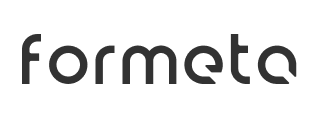Whether you’re a startup looking for your first product partner or an established company seeking a fresh design perspective, this FAQ offers clear answers to the most common questions about working with Formeta Design. We value transparency and alignment from day one — here’s what you can expect.
1. Why choose Formeta Design instead of a traditional design agency?
Unlike large agencies where projects often become impersonal and hierarchical, Formeta Design offers direct involvement from senior designers. Every project is led by the founder and design director, ensuring creative ownership, fast decision-making, and personalized attention at every stage.
This structure allows us to move swiftly and stay deeply aligned with your goals. With fewer layers and more accountability, we deliver clear communication, flexible adaptation, and designs that feel intentional — not generic.
As a lean, independent industrial design studio, we’re built for focus and fast results — ideal for product development teams seeking efficiency without sacrificing creativity.
2. What makes Formeta Design different?
Formeta Design doesn’t just design products — we shape narratives and build visions. Our approach blends design excellence with strategic thinking, ensuring every outcome is both meaningful and market-ready.
We believe design is more than just form and function; it’s a statement. Our team helps define the story behind your product so it connects with users on both emotional and practical levels.
We offer not just design services but strategic product innovation — helping brands translate insights into differentiated, user-driven products.
3. What industries does Formeta Design work with?
We’ve worked across a diverse range of industries including consumer goods, healthcare devices, smart transportation, and industrial equipment. This breadth has sharpened our ability to think holistically and solve sector-specific challenges with confidence.
This includes everything from smart home appliances to B2B healthcare technologies — allowing us to approach every product design with multidisciplinary insight.
Because of this cross-disciplinary exposure, we can quickly adapt to new contexts and apply learnings from one domain to innovate in another — bringing fresh insights to every collaboration.
4. Who will actually work on my project?
Formeta Design operates with a compact, senior-level team. Your project won’t be passed down to junior staff — it will be personally overseen by our founder and design director.
For specialized needs such as software development or engineering, we tap into our trusted network of collaborators. However, all creative direction and coordination remains in-house to ensure consistency and quality throughout the project.
You’ll work directly with experienced industrial designers who understand both form and functionality — no middlemen, no miscommunication.
5. What does your design process look like?
Our process begins with understanding — the context, the users, the challenges. We listen carefully, ask the right questions, and ensure every brief is translated into meaningful creative direction.
From there, we move through ideation, sketching, 3D development, prototyping, and refinement. We emphasize collaboration, fast iteration, and full transparency so you’re always part of the journey.
We follow a proven multi-phase process including research, sketching, CAD modeling, prototyping, and refinement — all grounded in user-centric design and validated through iteration.
6. I'm an early-stage company. Can I still work with Formeta Design?
Absolutely. We frequently support early-stage startups, helping them move from rough ideas to robust, manufacturable products. We guide you through product strategy, design language, and market positioning.
For us, working with startups is not just about delivering visuals — it’s about building long-term value. We become an extension of your team, offering both creative and business-minded support as you grow.
Whether you’re pre-seed or scaling, we help early-stage companies navigate product-market fit, design strategy, and go-to-market preparation.
7. Formeta Design is based in Turkey. Does your location affect how you work with international clients?
Not at all. We’ve successfully worked with clients across Europe, North America, and the Middle East. Our workflows are remote-friendly and supported by strong English communication and modern collaboration tools.
We understand the importance of clear timelines and shared expectations. That’s why we adapt to time zones, offer flexible scheduling, and prioritize consistent updates throughout every project.
Our digital-first workflow and cloud-based design tools allow us to deliver on time and on point — regardless of where you are in the world.
8. How much does it cost to work with Formeta Design?
We offer flexible pricing structures tailored to each project’s scope and complexity. Whether it’s a one-off design sprint or a long-term development partnership, we provide transparent cost breakdowns from the start. Our goal is to align budget expectations with meaningful outcomes. We work with both startups and large-scale companies, offering solutions that balance affordability and value.
9. Can you help with manufacturing or production support?
Yes. Beyond design, we also assist clients with preparing for production. This includes detailed part design, material sourcing advice, DFM (Design for Manufacturing) review, and connection to trusted manufacturers when needed. Our team ensures the design is ready not just for presentation, but for real-world implementation.
10. How do you ensure confidentiality and protect IP?
We take intellectual property seriously. All work remains confidential, and we’re happy to sign NDAs before project kickoff. You retain full ownership of the designs we create for you. If needed, we also support clients with patent drawings and documentation support as part of our collaboration.

